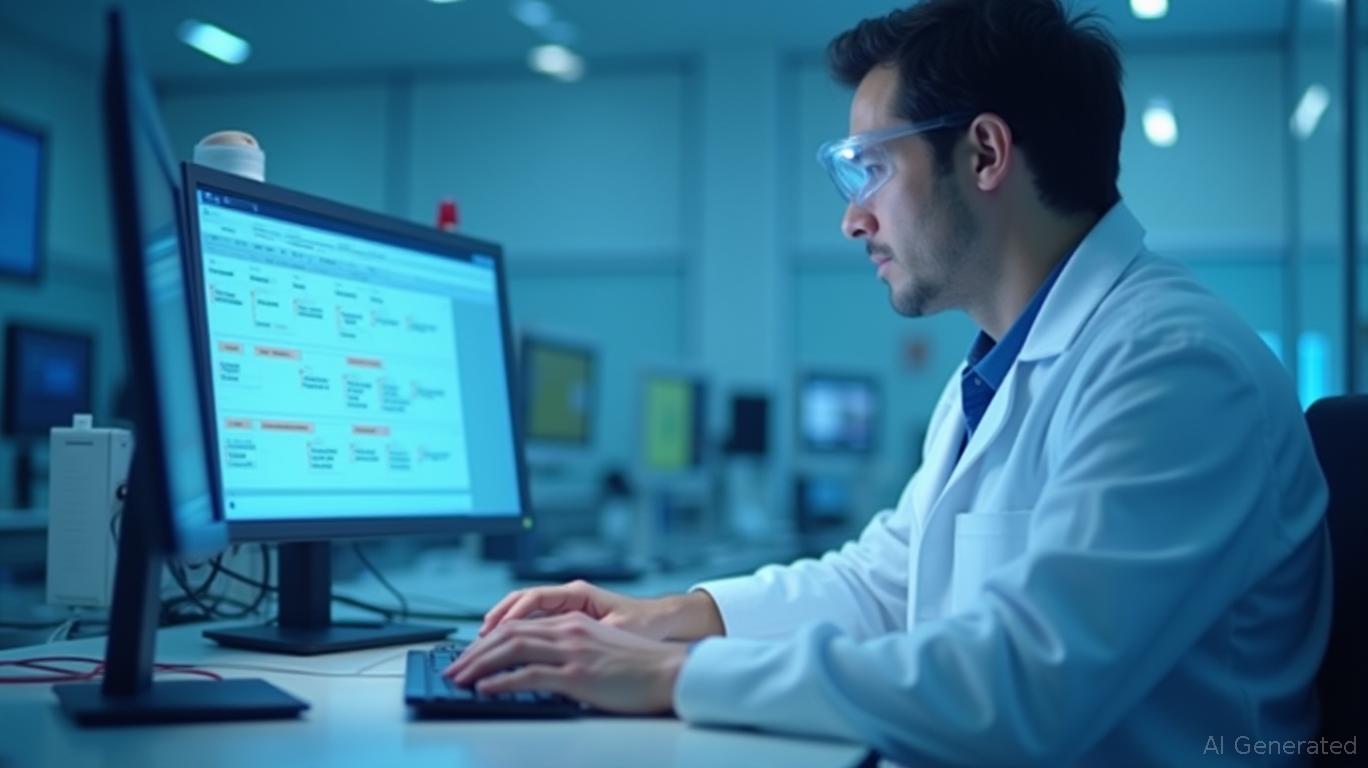Simulations Plus' Strategic Reorganization: Can Software Resilience Offset Biopharma Headwinds?
The biopharma sector is navigating a perfect storm of funding constraints, regulatory shifts, and project delays, leaving companies scrambling to adapt. Among them,
(NASDAQ: SLP) has embarked on a bold restructuring to align its operations with a software-driven future. The question for investors is whether its strategic pivot—shifting from a business unit structure to a functionally driven model—can counterbalance near-term revenue volatility and position the company for sustainable growth. Let's dissect the financials, operational changes, and product innovations to assess whether this is a contrarian buy opportunity.Strategic Reorganization: A Necessary Evolution or Overreach?
Simulations Plus has restructured its operations to streamline decision-making and reduce redundancies. By transitioning from a business unit structure to a functionally driven model, the company aims to enhance cross-functional collaboration, accelerate software development, and better serve clients in a cost-sensitive environment. Key moves include:
- Leadership Overhaul: The appointment of John DiBella as Chief Revenue Officer and the promotion of Josh Fohey to Chief Operating Officer signal a focus on sales synergy and operational efficiency. The elimination of 10% of its workforce (23 employees) is expected to save $4.3 million annually, with one-time severance costs of $0.7 million.
- Centralized Product Development: Co-Chief Product and Technology Officers Jonathan Chauvin and Erik Guffrey now oversee AI and software advancements, aiming to unify the company's tools like DILIsym and GastroPlus into a cohesive platform.
The move addresses a critical pain point: service segment volatility. While software revenue grew 41% in Q1 and 16% in Q2 2025 (to $10.7M and $13.5M, respectively), services faced delays due to client budget cuts. By prioritizing software—now expected to account for 55–60% of revenue—the company is leaning into its higher-margin, recurring revenue stream.
Software Resilience: The Cornerstone of Long-Term Growth
The company's software platforms, particularly DILIsym 11, represent its strongest growth lever. The new version's pediatric liver safety modeling—critical for regulatory approval of therapies targeting children—positions Simulations Plus as a leader in quantitative systems toxicology. This is no niche play: drug-induced liver injury (DILI) is a top cause of late-stage clinical trial failure, and DILIsym's ability to predict it early could save clients millions.

The software's adoption is already evident. Q1 revenue from its Quantitative Systems Pharmacology (QSP) unit surged 89%, driven by a major license for atopic dermatitis modeling. Meanwhile, the FDA's use of DILIsym underscores its regulatory credibility. This bodes well for recurring revenue and upselling opportunities as clients expand their use of Simulations Plus' platforms.
Financials: Navigating the Near-Term Storm
The company's revised guidance—full-year revenue now $76–80M versus the initial $90–93M—reflects the biopharma sector's challenges. However, the adjusted EBITDA margin target of 31–33% remains intact, suggesting cost discipline. Let's parse the data:
- Q2 2025 Results: Total revenue rose 23% to $22.4M, with software at 60% of revenue. Adjusted EBITDA dipped to $6.6M (29% of revenue) due to higher reinvestment in R&D and sales. Yet, the company's six-month adjusted EBITDA margin of 27% remains robust for a growth-oriented tech firm.
- Valuation Check: At a current P/E ratio of ~20X (vs. .
Risks and Contrarian Thesis
The reorganization carries risks. Integration challenges, client project delays, and competition from cloud-based biosimulation rivals (e.g., Certara) could slow progress. However, the contrarian case hinges on three factors:
- Software's Scalability: The shift to a functionally driven model should reduce overhead, enabling higher gross margins as software adoption grows.
- Pediatric Innovation: DILIsym 11's regulatory edge in a pediatric drug market expected to reach $35B by 2030 creates a defensible niche.
- Valuation Catalysts: If Q3 results (due July 2, 2025) show stabilization in services bookings and margin expansion, the stock could rebound sharply.
Investment Takeaway
Simulations Plus is a high-risk, high-reward bet for investors willing to look past near-term headwinds. The stock's dip to ~$35 (from $50 in 2024) reflects sector-wide pessimism but also creates an entry point if the reorganization succeeds. Key triggers to watch:
- Q3 Earnings Call (July 2): Look for signs of service backlog recovery and software margin expansion.
- DILIsym Adoption: Track new licenses in pediatric and autoimmune therapies, which could accelerate in late 2025.
- Margin Targets: Achieving a 31–33% EBITDA margin despite lower revenue would validate cost discipline.
Historical performance of earnings-based strategies for SLP underscores the risks of short-term timing. A backtest analyzing a strategy of buying 5 days before earnings and holding until the next announcement from 2020 to 2025 revealed a staggering -93.47% return, with a maximum drawdown of -99.46% and volatility of 169.86%. These results highlight the strategy's inefficacy, suggesting that investors should avoid such timing and instead focus on long-term fundamentals and execution milestones.
For now, hold or accumulate on dips, with a 12–18-month horizon. If the company can execute its restructuring and leverage its software dominance, the $40–$50 price target (pre-recession levels) could be attainable by early 2026. The path is narrow, but the payoff for investors willing to bet on Simulations Plus' resilience could be substantial.
In a sector plagued by uncertainty, Simulations Plus' focus on software-driven predictive analytics is a strategic move. The question is whether the reorganization's cost savings and product innovation can outpace the biopharma sector's headwinds. The data suggests cautious optimism—and a compelling contrarian opportunity.

Comments
No comments yet